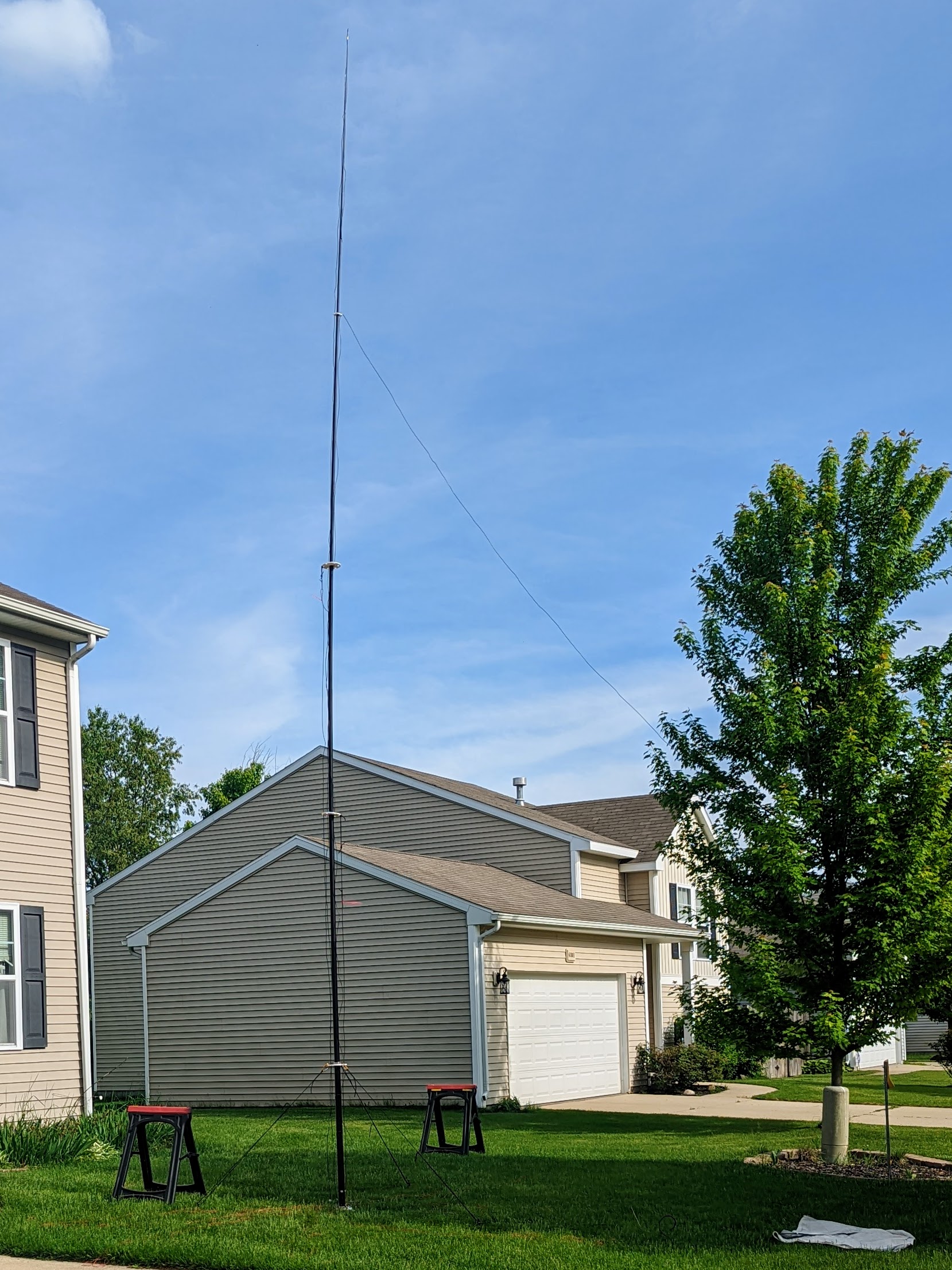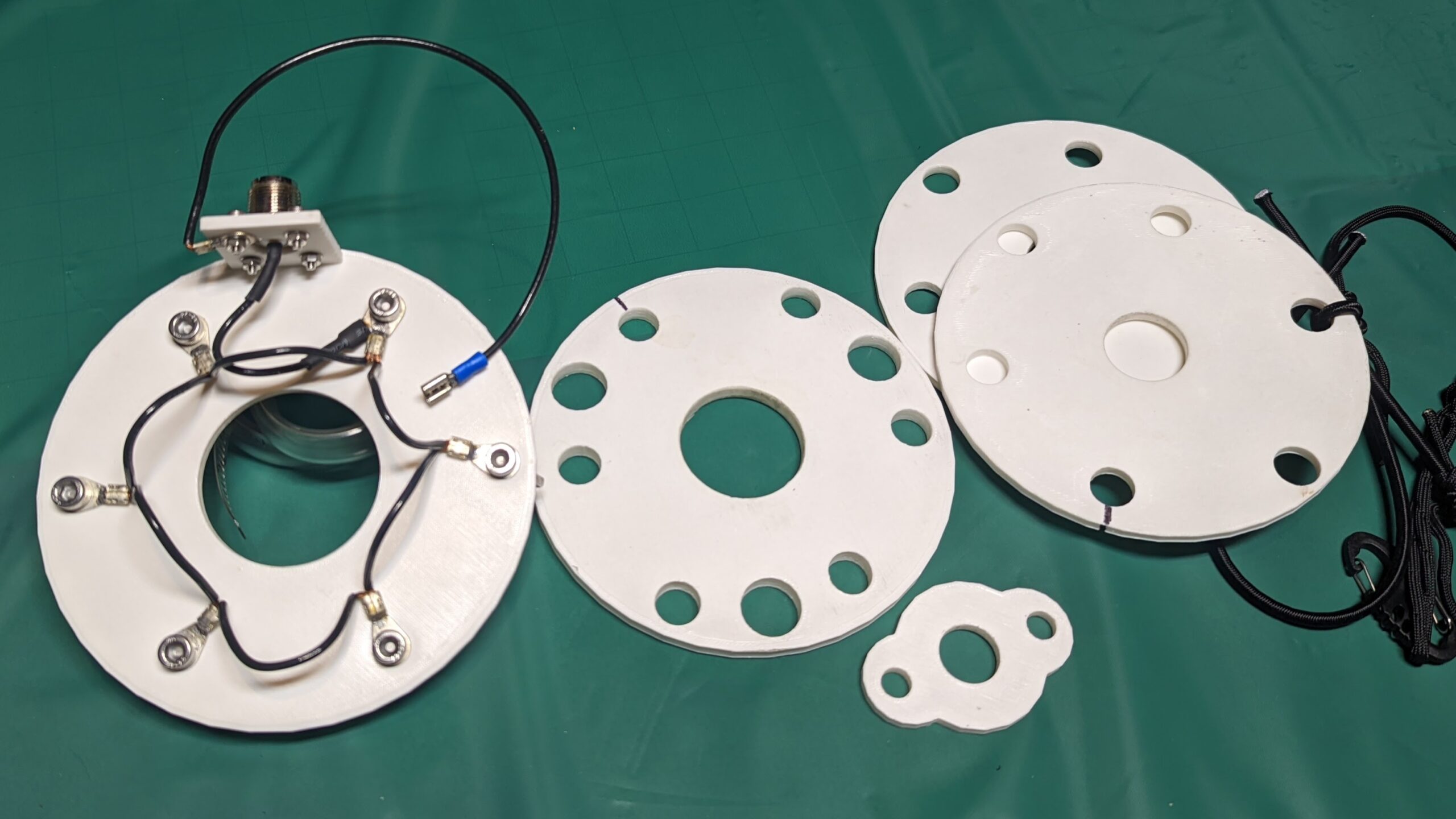This year at field day I hosted a digital station in place of our usual CW station. It was a great educational experience as we had several FT8 and FT4 demonstrations throughout the weekend and had several people get hands on and try the modes for the first time. Because we were the only dedicated digital station I wanted to have access to as many bands as possible to help maximize our ability to find stations to work. I took the opportunity to build an antenna I’ve wanted to try out for a number of years; a DX Commander.

The DX Commander is a vertical antenna built on a similar principle as a fan dipole. A number of elements are attached to a common feed point and when presented to your transceiver a signal will seek the element most resonant. Instead of being a dipole; the system is a quarter wave vertical with radials.
The heart of the antenna is a 31 ft fiberglass pole and a series of spacer plates that help keep the elements in place and self supporting. The spacers are loaded on the mast at various heights and secured with hose clamps. The whole arrangement is supported by 3-6 staked lines depending on duration of deployment and expected weather conditions.
I sourced my mast from a US company called Jack Kite. For the spacers I designed and 3d printed them out of ABS plastic, making a similar design to the original layout. In the commercial product the spacers are made from HDPE plastic that is cut by water jet and the driven element plate is made from aluminum. Since I don’t have the tools to do metal work at home, I printed it in ABS plastic and connected each element’s connection point to the next in a ring back to the feed point with identical lengths of wire. For the radial plate I used a simple screw terminal strip and a short pigtail to the shield of the coax connection.

I cut the elements using the cut chart in the DX Commander instructions as a starting point, Electing to omit the 17 meter element and replace it with the 80 meter element for the contest. I used 14 gauge antenna wire DX engineering for the elements. There are 24 radials 10 ft long, grouped in 3’s and soldered to ring connectors for easy installation in the field. The radials were cut from 20 gauge silicone wire that is extremely flexible, it rolls up easily and lays on the ground flat without kinking.
With time, patience, and careful tuning you can achieve a near perfect SWR on all bands of operation, during initial build of the antenna I was able to achieve under 1.3:1 on the lower (FT8) portion of 80, 40, 20, 15, and 10m with little issue. During deployment at field day I noticed it was closer to 1.5 – 1.8 on each band, so I simply used the Icom’s built in tuner to bring it inline a little better. We managed 295 contacts at the digital station using the antenna during the weekend. So I’ll consider it a successful test of the antenna. Thanks to all who stopped by the digital station and checked out the antenna and the FT modes! I had a great time teaching and operating, and appreciated the fellowship with club members.